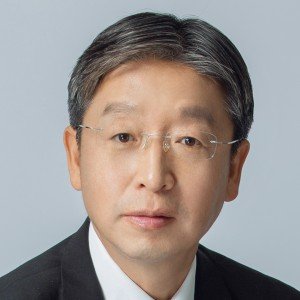The purpose of the intellectual property system is to encourage innovation, and to promote scientific and technological innovation into realistic productivity. Trademarks have the characteristics of exclusiveness; without the consent of the trademark owner, nobody may use a trademark registered by others. As the commercial value of trademarks is infinite, they have become an integral part of an enterprise’s intangible assets. In the increasingly fierce competition in the market today, the role of the trademark in the market competition has increasingly attracted people’s attention. However, because the trademark right is exclusive, some parties want to register a trademark not for the actual commercial use; instead, they just want to take advantage the nature of the trademark’s exclusiveness to obtain illegal benefits.
In accordance with the Trademark Law of the PRC, a trademark registrant shall have the right to exclusively use a registered trademark. It is natural and legal that a registrant determines the trademark protection scope and takes actions to protect trademark rights based on trademark information recorded on the trademark registration certificates. However, there have been abuses of trademark rights, which may cause suspension of production, breach of contract and other property losses as well as non-property losses such as loss of business opportunities and damage to goodwill of parties in good faith.
For victims of the abuse of trademark rights, actions could be taken to protect their legal rights and interests, either to defend or to initiate litigation against the abuse of their rights. The legal basis for taking actions against abuse of trademark rights is the “principle of good faith” as regulated in Article 7 of Civil Code. Also in China’s Civil Code, Article 132 requires that “the parties shall not abuse civil rights to damage the national interest, public interest, or the lawful rights and interests of any other person.”
In judicial practice, the Supreme People’s Court (SPC) confirmed in Guiding Case No. 82, Wang Suiyong v. Shenzhen Gelisi Clothing Co., Ltd. et.al. (the Gelisi case), that “abuse of trademark right” could be a defense against trademark infringement claims. The Supreme People’s Court pointed out that the “principle of good faith” is the basic criterion that all participants in commercial activities should follow. The act that violates the purpose and spirit of the law, aims at damaging others’ legitimate rights and interests, obtains and exercises rights in bad faith, and disrupts fair competition in the market is an abuse of right; the related claims should not be protected and supported by the law. Based on the recent judgments, especially the judgment issued by the Supreme People’s Court, it is summarized that the key points of defense against abuse of trademark rights include: the defendant’s lawful prior rights; the defendant’s legitimacy of use, the distinctiveness and reputation of the defendant’s prior rights and that the plaintiff’s registration of the trademark is not legitimate.
The defendant’s lawful prior rights. The defendant’s prior rights include rights over trade name, prior registered trademark, domain name, individual names, etc. In the Gelisicase, the plaintiff Suiyong Wang claimed trademark infringement based on his trademark Gelisi, registered in June 2011 covering goods in Class 18. The defendant in the case, Shenzhen Gelisi Clothing Co., Ltd., and its affiliates, started using Gelisi as a trade name in 1996 and obtained the exclusive right to use the Gelisi registered trademark on clothing and other goods in Class 25 in 1999. Through years of use and extensive promotion, Gelisi as a trade name and registered trademark has gained a high reputation in the market, and the defendant has legitimate prior right onto the commercial logo Gelisi.
In another judgment issued by Supreme People’s Court, Shao Wenjun v. Ningbo Guangtian Saikesi Hydraulic Technology Co., Ltd. (the Saikesi case), the plaintiff Wenjun Shao initiated litigation based on his trademark “Saikesi in Chinese and Saikesi” registered in March 2009, while the defendant and its affiliate company started using Saikesi in Chinese as trade name in 1997 and saikesi.com as a domain name in 2000. The Supreme People’s Court confirmed the continuous use and reputation of the trade name and domain name and supported the defendant’s prior rights.
In Qiaodan Sports Company Limited v. Beijing Shijizhuoyue Information Technology Co., Ltd. (the Qiaodan case)for trademark infringement on Qiaodan (“Jordan” in Chinese), the Beijing Intellectual Property People’s court supported the prior right over an individual’s name. The court confirmed that, since 1992, the Chinese media started using “Qiaodan” as the name in Chinese for the American professional basketball player Michael Jordan. “Qiaodan” already has a high reputation in China and is familiar to the relevant public, and it has a fixed and close connection with Michael Jordan. Therefore, Michael Jordan has the prior right over the Chinese name “Qiaodan.”
The accused act is based on legitimate right, the way of use and the nature of the act are legitimate and will not mislead consumers. In the Gelisi case, the defendant’s trade name and trademark already has a high reputation, and the defendant is selling the accused infringing goods at its own counter; thus, it is not likely to mislead the consumers about the origin of the goods.
In the Saikesi case, the SPC confirmed that through the defendant’s production, sale and promotion of products bearing the marks “Saikesi in Chinese” and “SAIKESI”, these marks are considered as closely related with the defendant. As the plaintiff did not submit any evidence proving its use of the trademark, there is no evidence proving that the defendant has bad faith or the intention to take the advantage of the reputation of the plaintiff’s trademark. The defendant is using the main part of its trade name and the corresponding Chinese pinyin, which already have certain reputation; thus, it will not cause consumers’ confusion.
In the Qiaodan case, the mark Qiaodan is used with the mark Nike in the product title on the website operated by the defendant. The court considered that as the mark Nike already has a high reputation, consumers could know the origin of the goods while seeing the mark Nike and will not associate the goods with the plaintiff. Moreover, the mark Qiaodan is used for introduction of the series products endorsed by Michael Jordan. Such use is reasonable, without intention to take the advantage of the plaintiff’s trademark and would not be a barrier for consumers to identify the origin of the goods.
The plaintiff’s registration of the trademark is not legitimate.
In the Gelisi case, the defendant’s trade name and prior registered trademark Gelisi is a coined word and does not have any fixed meaning. The plaintiff’s registration of the mark could hardly be regarded as a coincidence. As a business operator located at a region near the defendant and in a similar industry, the plaintiff should have known the defendant’s prior registered trade name and trademark. The plaintiff’s application for registration of Gelisi on bags and wallets could hardly be regarded as legitimate. The plaintiff’s infringement lawsuit is based on a trademark obtained in bad faith and is against the plaintiff’s fair use in good faith, therefore the plaintiff’s act constituted an abuse of right.
In the Saikesi case, the plaintiff once worked in the local administration for industry and commerce. The SPC has the opinion that when the plaintiff quit the job, he should have known the defendant’s trademark registration status and the use status of the trade name. The plaintiff took the advantage of his position and maliciously registered trademarks, which harmed other’s prior rights and brought illegitimate benefits for himself. The act is considered as a violation of the principle of good faith; the plaintiff’s claims should not be supported.
In another typical case,Guangzhou Compass Exhibition Service Co., Ltd. and Guangzhou Zhongwei Enterprise Management Consulting Service Co., Ltd. v. Uniqlo Trading Co., Ltd. et al(the Uniqlo case), the SPC found out that after obtaining the trademark right illegitimately, the plaintiff intended to sell the trademark to the defendant at a high price. When the attempt failed, the plaintiff initiated a series of infringement litigations against the defendant and the stores operated by the defendant in different places all around China. The SPC confirmed the litigations had been filed maliciously and are obviously against the principle of good faith. The plaintiff intended to use judicial resources to seek illegitimate benefits and its trademark right should not be protected. The defendant’s defense that the plaintiff initiated the litigation in bad faith is supported.
To fight against the abuse of trademark rights, victims of trademark abuse could also file litigation under the claim of unfair competition, request for confirmation of non-infringement or claim for damages caused by maliciously initiated intellectual property litigation.
In Bayer Consumer Care Holdings LLC, Bayer Consumer Care AG v. Li Qing et al. for unfair competition case, the defendant copied the main parts of the plaintiff’s copyrighted works and filed trademark applications. After obtaining the trademark registrations, the defendant did not put the trademarks in actual use but filed complaints with online platforms against the plaintiff’s legal use. The court confirms that the defendant’s trademark registrations were in bad faith and the complaints were filed in bad faith. The court applies the good faith principal as regulated in Article 2 of Anti-Unfair Competition Law, and rules that the defendant’s act constituted unfair competition, the defendant shall bear a compensation of Rmb700,000 (US$109,000). This case is reported as the first case in which the legal right owner fought against bad faith trademark registrants and obtained compensation under the Anti-Unfair Competition Law.
In Paula’s Choice, LLC et.al v. Chongqing Kaimenhong Trading Co., Ltds.for confirmation of a non-infringement case, the court found that the defendant maliciously registered a trademark that the plaintiff had previously used and which had a certain influence, and abused the trademark rights by filing complaints with online platforms, causing the plaintiff’s economic losses and loss of reputation. The court confirmed that plaintiff does not infringe the defendant’s trademark right and requested the defendant to bear civil liabilities such as compensation for losses and elimination of the impact for abuse of trademark right.
In Jiangsu Zhongxun Digital Electronic Co., Ltd. v. Shandong Bite Intelligent Technology Co., Ltd.for damages caused by maliciously initiated intellectual property litigation, Zhongxun’s legitimate use of the mark TELEMATRIX was influenced by Bite’s abuse of trademark right, thus Zhongxun filed this litigation to protect its legal rights. In this litigation, the court pointed out that Bite’s bad faith in registration of the trademark can also be regarded as the basis for determining Bite’s bad faith when filing a lawsuit against Zhongxun. The reason is that when the trademark owner knows the acquisition of IP rights is not justified but initiates a lawsuit to damage other’s legitimate rights and interests or obtain illegal benefits, the litigation is obviously initiated in bad faith. The court supported Zhongxun’s claims and requested Bite to compensate Rmb1 million (US$156,000) for Zhongxun’s economic loss and reasonable expenses.










